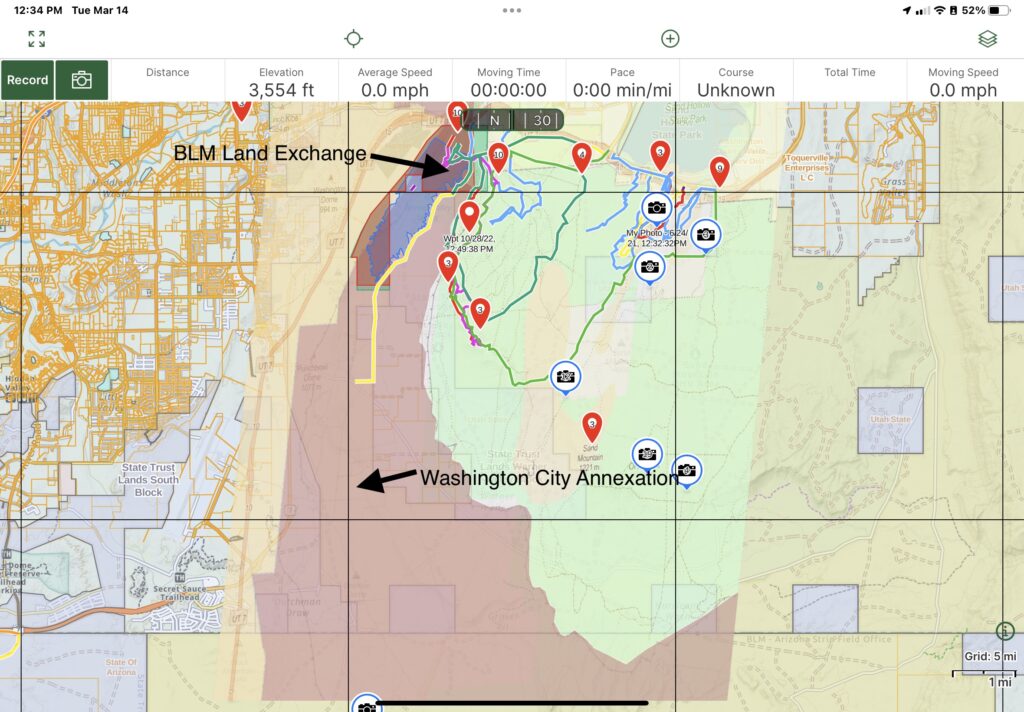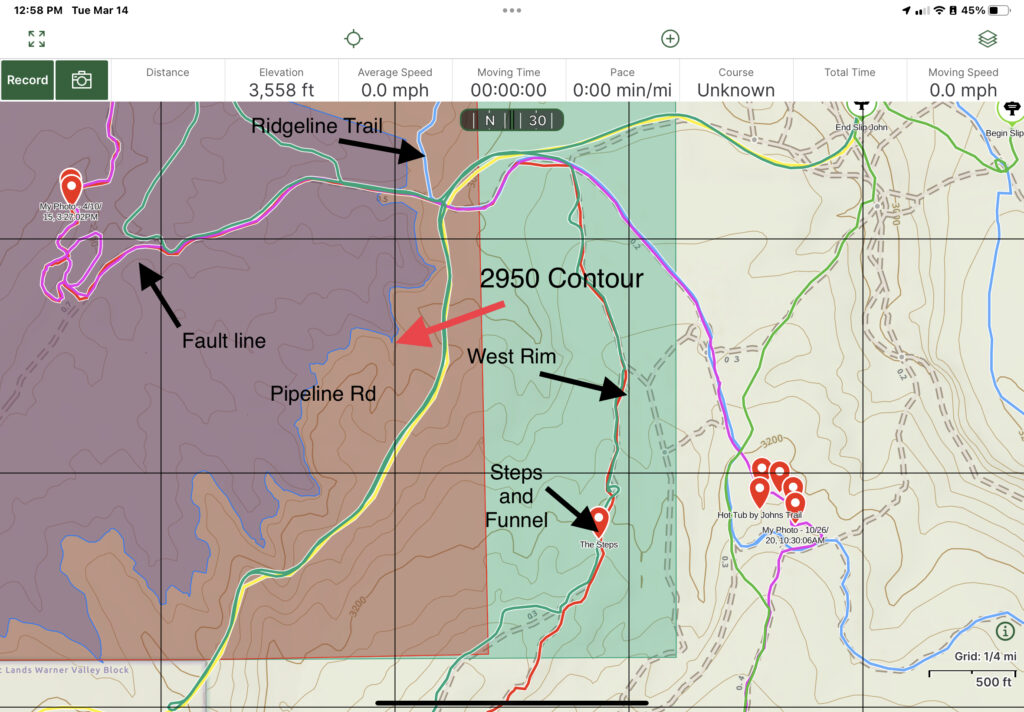RockChucker
Well-Known Member
- Location
- Highland

Stop The Sale of Sand Mountain!
BLM and the Washington County Water Conservancy District have proposed a land exchange that would involve swapping 1050 acres of the Western Edge of Sand Mountain near Warner Valley with 89 acres of land in Washington near Green Springs, apparently owned by His Family/Brennan. Washington County...
BLM and the Washington County Water Conservancy District have proposed a land exchange that would involve swapping 1050 acres of the Western Edge of Sand Mountain near Warner Valley with 89 acres of land in Washington near Green Springs, apparently owned by His Family/Brennan. Washington County is designated as the Facilitator of the Exchange. You can learn more at the BLM E Planning website, EplanningUi (blm.gov). You can also see the Public Scoping Notice which is attached.
We also obtained plans by the City of Washington to annex much of the acquired area into their City, which may be a significant influence in the exchange.
The proposed action just entered the Public Scoping phase, which is scheduled to conclude at 5:00 PM on April 13, 2023. UPLA, DRATS, Mayor Nanette Billings (Hurricane), BlueRibbon Coalition, and Tri State ATV have been meeting with BLM, Water Conservancy, and the City of Washington to learn more about the project.
We attached a couple illustrations to show the following:
- An Overall view of the Washington City Annexation Plan, which shows the proposed BLM Exchange areas, the new Washington City Annexation, and the proposed reservoir in the valley.

- In this photo, you can see the Red Outlined section was the land originally requested in October 2022, and the Green Outline shows the expanded area they added in February. The exchange and City Annexation include all of the area around the Pipeline Road and disbursed camping sites, and portions of West Rim including the Steps and The Funnel. It also shows our proposal to push the land exchange back to the 2950’ elevation right around the reservoir edge.

We were previously informed when the reservoir was done, we would lose the lower parts of Fault Line and Sandcutter, as well as the camping/staging area near Hwy 7, but when we learned that, we constructed the Ridgeline Trail at substantial expense to maintain access from Warner Valley.
We are extremely concerned for many reasons, including the following:
We have been working hard on this for 4 weeks to get this information. This is the part where we need you!
- BLM will give up 1050 acres of Sand Mountain in exchange for 89 acres in St George
- We will lose access to the West Rim Trail, the Restroom on Pipeline Road, the disbursed camping areas, and possibly the Ridgeline Trail we constructed to mitigate the reservoir loss.
- We will lose staging and camping in Warner Valley
- There has apparently been no decision about what agency would oversee recreation in the newly acquired area, but it seems likely it will become a fee area.
- If access to Sand Mountain is impaired from Washington Dam, it will impact the load on other roads including our newly constructed Waddy’s Corral Staging area.
- We are extremely concerned that the City of Washington will be annexing the land surrounding Pipeline Road and West Rim, and that they may permit development on top of the Rim; the views over a lake will skyrocket land values. Development would bring a whole host of issues including loss of the tremendous views from above by having buildings/homes on top of the ridge, user conflicts between residents/occupants and OHV users.
- We only have 30 days to inform the public and submit scoping comments.
What we need you to do:
Attend the Public Scoping Meeting and voice your concerns. next Tuesday, March 21 from 5:00 to 7:00 at the St George Library, Forsyth Community Room B, 88 W 100 S, St George, UT 84770
We will inform the media of the event and urge them to cover it, so we urge you to drive your 4x4s and street legal machines to the meeting to show the level of concerns on this.
We have a great relationship with BLM in the St George Field Office, and it is very important that we are vocal, but respectful during the meeting. It is very likely that the crowd may exceed the capacity of the room, so please be patient. Representatives from BLM will meet with small groups of people at a time. They will also provide Comments Forms to you and help you learn how to submit them.
Following is a brief description of the Scoping process in the NEPA Review that may guide you in formulating your questions/comments for the meeting. We will have a handout for you when you enter the meeting.
The National Environmental Policy Act (NEPA) requires the Bureau of Land Management (BLM), to involve the public in the planning process and seek their input through a scoping process. Effective NEPA scoping comments for BLM should pose the questions or issues to be looked at, not provide answers.
- Specific information about the proposed project and its potential impacts on the environment and local communities.
- Identification of any alternatives to the proposed project that could mitigate or avoid potential negative impacts.
- Discussion of the potential cumulative effects of the proposed project in combination with other past, present, and reasonably foreseeable future actions.
- Analysis of potential impacts on wildlife, water resources, cultural and historic resources, and other sensitive environmental resources.
- Request for meaningful public participation throughout the NEPA process, including opportunities for public comment and involvement in decision-making.
- Request for transparency and disclosure of all relevant information, including scientific data and analysis, underlying assumptions, and potential conflicts of interest.
- Discussion of any potential economic impacts of the proposed project, including impacts on local jobs, property values, and tax revenue.
- Recommendation for monitoring and mitigation measures to minimize or address any adverse environmental impacts.
- Discussion of any potential long-term impacts of the proposed project on the environment and local communities.
- Request for BLM to consider the full range of alternatives and potential impacts, rather than limiting the analysis to a narrow set of options.

